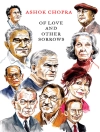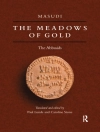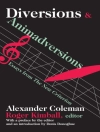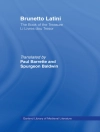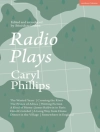A new look at how reading was practised and represented in England from the seventh century to the beginnings of the print era, finding many kinships between reading cultures across the medieval longue durée.
Even as it transforms human cultures, routines, attention spans, and the wiring of our brains, the media revolution of the last few decades also urges a reconsideration of the long history of reading. The essays in this volume take a new look at how reading was practised and represented in England from the seventh century to the beginnings of the print era, using texts from Aldhelm to Malory and Wynkyn de Worde, arguing that whether unpicking intricate Latin, contemplating image-texts, or participating in semiotically-rich public rituals, reading cultivated and energized the subject’s values, perceptions, and attitudes to the world.
Part I, ‘Practices of Reading’, asks how writers, scribes and artists engaged readerly attention through textual layout, poetic form, hermeneutic difficulty, or images, while Part II, ‘Politics of Reading’, explores how different textual communities manipulated the anxieties and opportunities for education, moral improvement or entertainment associated with reading; particular topics addressed include Bible translation and exegesis, page layout, literary form and readerly practice, fiction, hermeneutics, and performance. Although it understands reading as culturally and technologically localized, the book finds many kinships between reading cultures across the medieval
longue durée and the literatures and literacies that proliferate today.
Contributors: Amy Appleford, Michelle De Groot, Daniel Donoghue, Andrew James Johnston, Andrew Kraebel, Katherine O’Brien O’Keeffe, Catherine Sanok, Samantha Katz Seal, James Simpson, Emily V. Thornbury, Kathleen Tonry, Kathryn Mogk Wagner, Nicholas Watson, Erica Weaver, Anna Wilson.
Table of Content
Introduction – Daniel Donoghue, James Simpson, Nicholas Watson, Anna Wilson
PART I. PRACTICES OF READING
1. Literally, What Did Medieval Readers See? – Daniel Donoghue
2. Reading for the Ornament: Repetition and Structure in the Old English
Exodus – Emily Thornbury
3. A Canterbury School of Literary Theory: Aldhelm’s
De virginitate, the
Liber monstrorum, and (Un)Reliable Fictions – Erica Weaver
4. About Face: Addressing the Vernicle in Late Medieval England – Catherine Sanok
5. Ascetic Reading – Amy Appleford
6. Prayer at Plough: Medieval Reading Practices and the Work of the Paternoster – Kathryn Mogk Wagner
PART II. POLITICS OF READING
7. Who Reads Now? The Anxieties of Millennial Reading: The 2019 Morton W. Bloomfield Lecture – Katherine O’Brien O’Keeffe
8. The Jewish Reader: A Medieval Antitype – Samantha Katz Seal
9. Biblical Compilation, Regional Reading and Tailored Texts: The Making of Selwyn College MS 108 L. 1 – Andrew Kraebel
10. Reading the Fair Maid of Astolat: Editorial Practice, Performative Emotionality and Communal Forms of Reading – Andrew James Johnston
11. Marx Goes Fishing: The Temporalities of Idleness – Kathleen Tonry
12. Shining Cities: Communal Reading and the New Jerusalem from Maidstone to Mc Cain – Michelle De Groot
Bibliography
A Note on the Bloomfield Conferences
General Index
About the author
Anna Wilson teaches English at Harvard University. Her research interests include Medieval English literature and literary culture, fanfiction and fan communities, and medieval gender, sexuality, and race.




